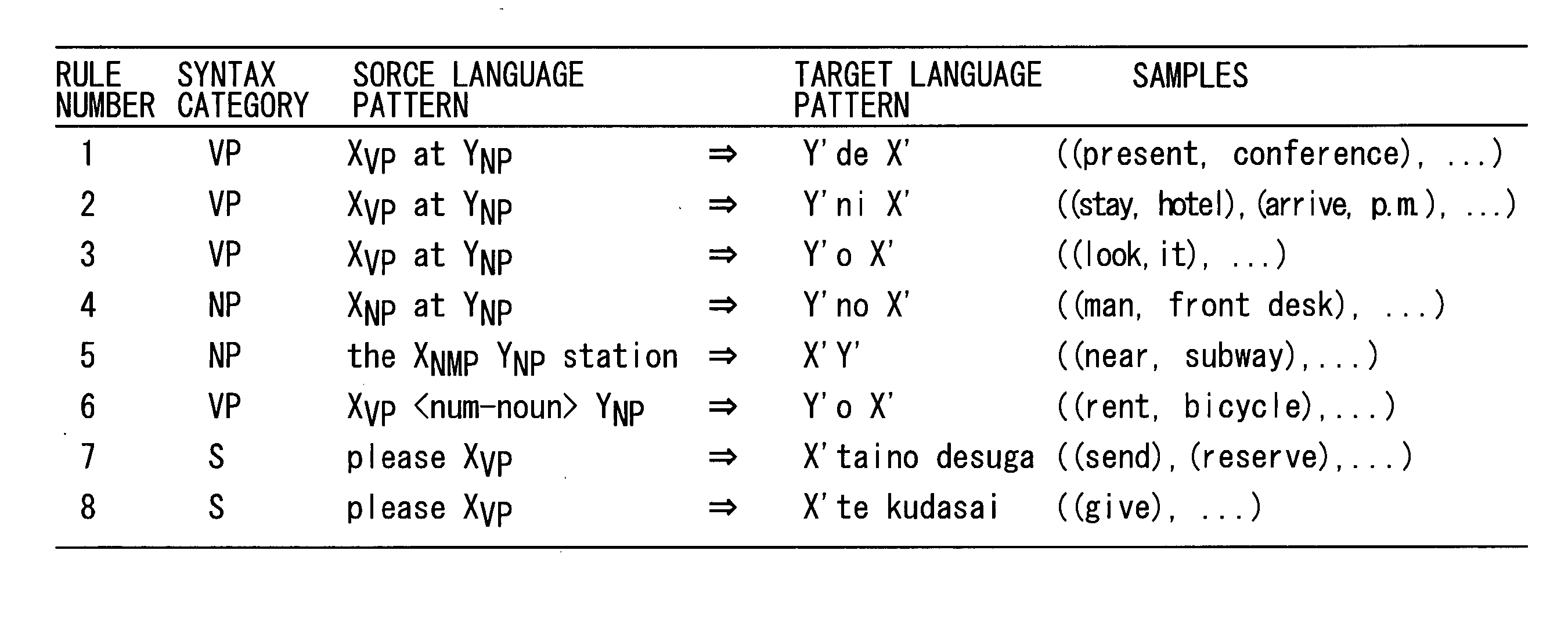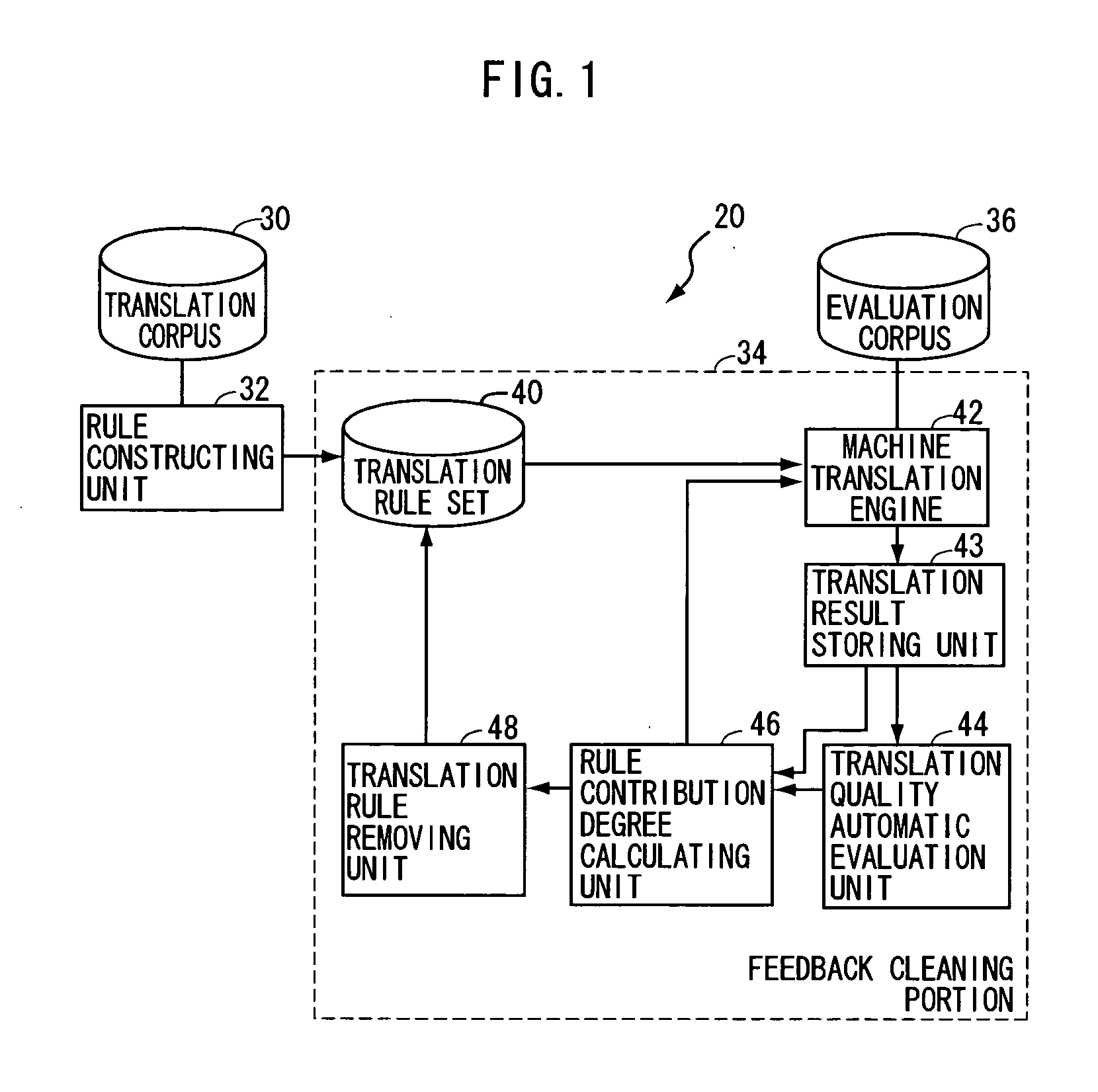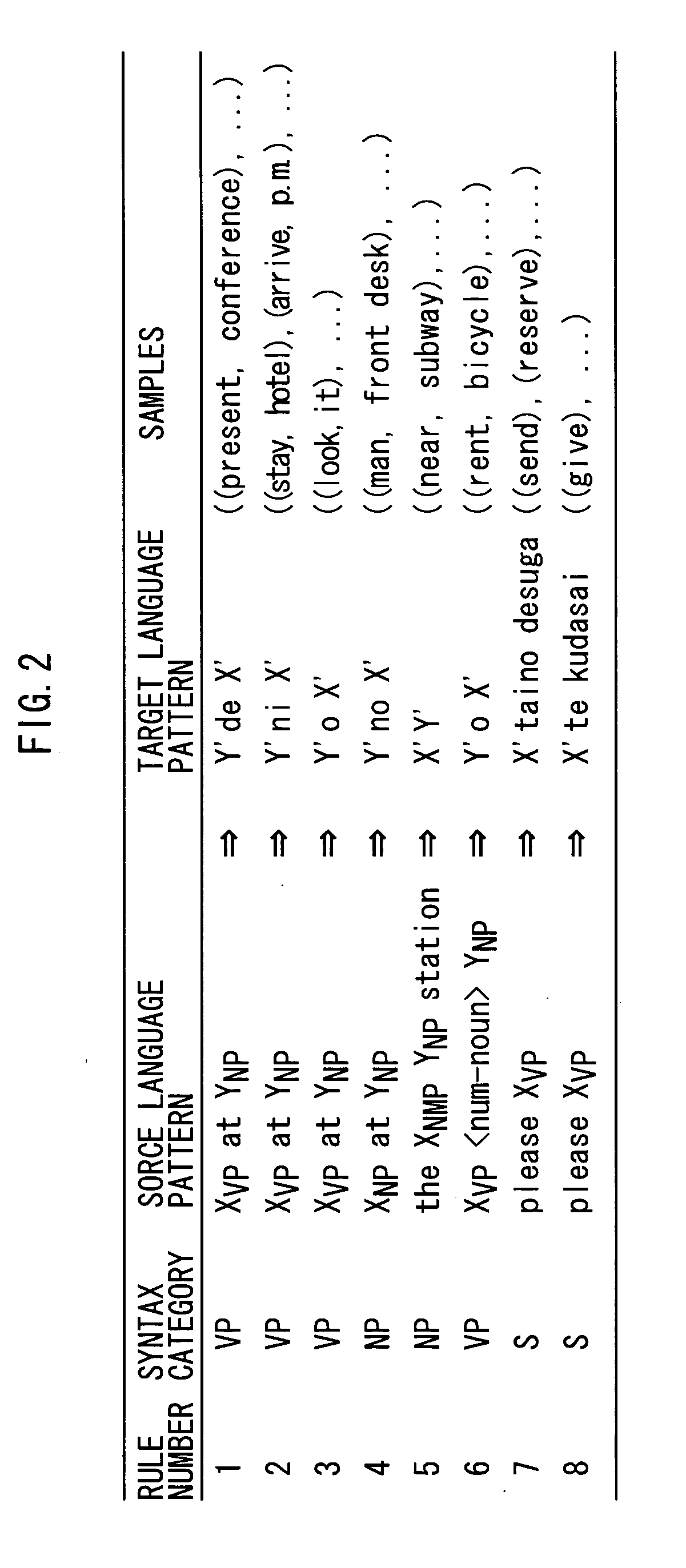Method and apparatus for improving translation knowledge of machine translation
a machine translation and machine learning technology, applied in the field of apparatus for forming translation knowledge, can solve the problems of increasing ambiguity of machine translation, inherently liable errors of translation rules, and many redundant rules
- Summary
- Abstract
- Description
- Claims
- Application Information
AI Technical Summary
Benefits of technology
Problems solved by technology
Method used
Image
Examples
translation example 2
[0080] Rule 6 of FIG. 2 is an example of an erroneous translation formed by an error in automatic construction of translation rules. At the time of automatic construction, "rent two bicycles" is erroneously analyzed to contain a verb phrase of "rent two" and a noun phrase of "bicycles". Correctly, "rent" is the verb phrase and "two bicycles" is the noun phrase. This sort of error, however, cannot be fully prevented at the time of automatic construction of translation rules.
[0081] When an English sentence "I want to rent two rackets" is translated, Rule 6 is applied, and Japanese translation "raketto o 2 karitaino desuga" results. When Rule 6 is removed, the translation changes to "raketto o nihon karitaino desuga" and automatic evaluation value after removal of Rule 6 attains 0.233529. Degree of contribution of Rule 6 is -0.000166, and therefore, Rule 6 is removed.
translation example 3
[0082] Rules 7 and 8 of FIG. 2 are examples of rules formed from paraphrases. Though both are correct rules, they are conflicting with each other.
[0083] When an English sentence "Please cash this traveler's check" is translated, either Rule 7 or Rule 8 is applied. Assume that Rule 7 is applied in this example. The result of translation is "kono toraverazu chekku o genkin ni shitaino desuga."
[0084] When Rule 7 is removed, the translation changes to "kono toraverazu chekku o genkin ni shite kudasai." Then, automatic evaluation value after removal attains to 0.233585. This means that translation pairs that match Rule 8 are contained in larger number than translation pairs that match Rule 7 in evaluation corpus 36.
[0085] Here, degree of contribution of Rule 7 attains to -0.000222. As a result, Rule 7 is removed, and translations that match expressions more frequently appear in evaluation corpus 36 results.
first embodiment
Effects of the First Embodiment
[0086] In translation rule extracting apparatus 20 in accordance with the first embodiment described above, by the function of feedback cleaning unit 34, the group of translation rules automatically constructed from the bilingual corpus can automatically be cleaned using the translation quality automatic evaluating unit. As a result, translation rules affecting the result of translation are removed, and the quality of translation result of the translation system using the automatically constructed translation rules can be improved. Actually, the results of translation using the translation rules after cleaning attained better evaluation than the results of translation using translation rules before cleaning.
Computer Implementation
[0087] Translation rule extracting apparatus 20 in accordance with the first embodiment described above may be implemented with a computer and software executed thereby. FIG. 3 shows an appearance of a computer used in impleme...
PUM
 Login to View More
Login to View More Abstract
Description
Claims
Application Information
 Login to View More
Login to View More - R&D
- Intellectual Property
- Life Sciences
- Materials
- Tech Scout
- Unparalleled Data Quality
- Higher Quality Content
- 60% Fewer Hallucinations
Browse by: Latest US Patents, China's latest patents, Technical Efficacy Thesaurus, Application Domain, Technology Topic, Popular Technical Reports.
© 2025 PatSnap. All rights reserved.Legal|Privacy policy|Modern Slavery Act Transparency Statement|Sitemap|About US| Contact US: help@patsnap.com



